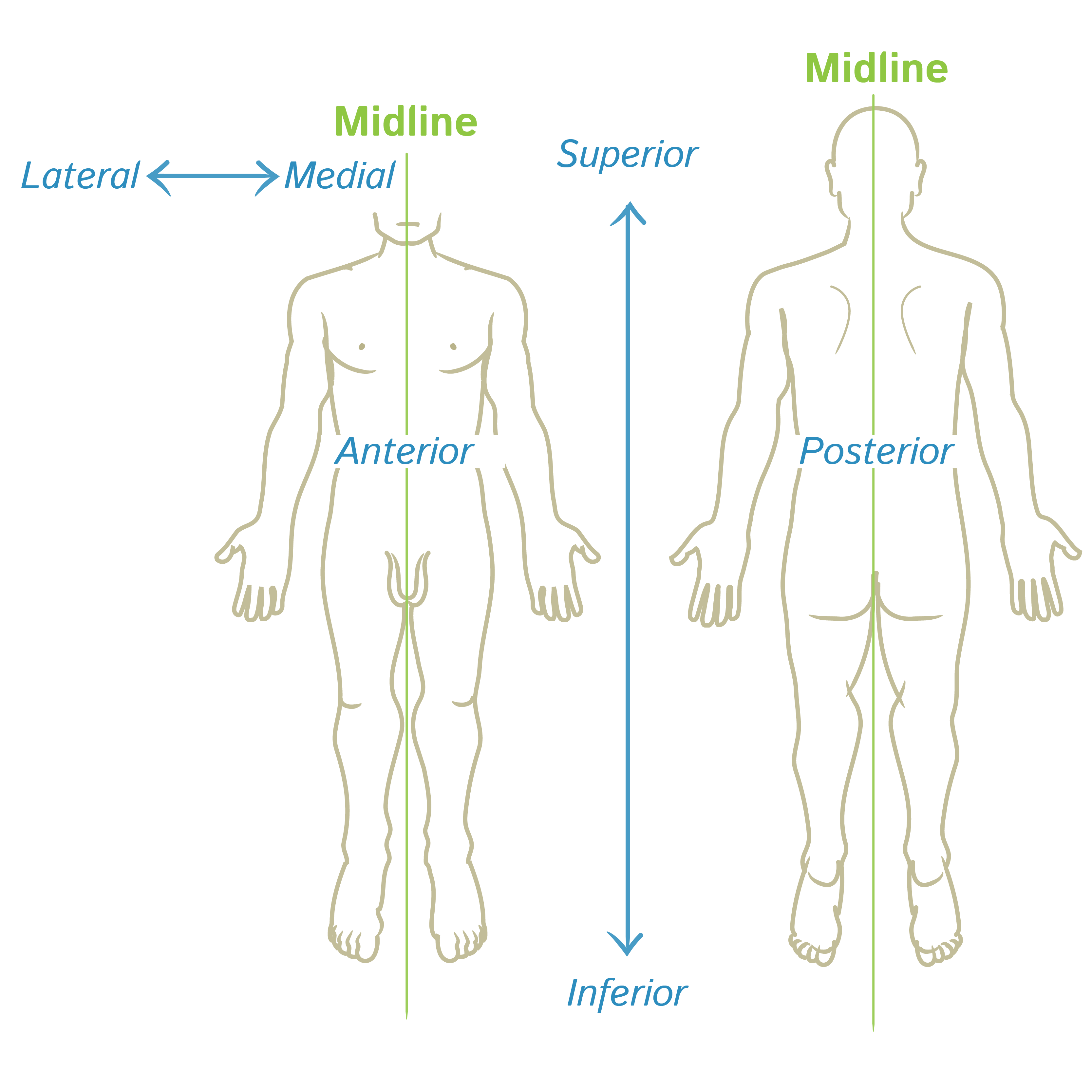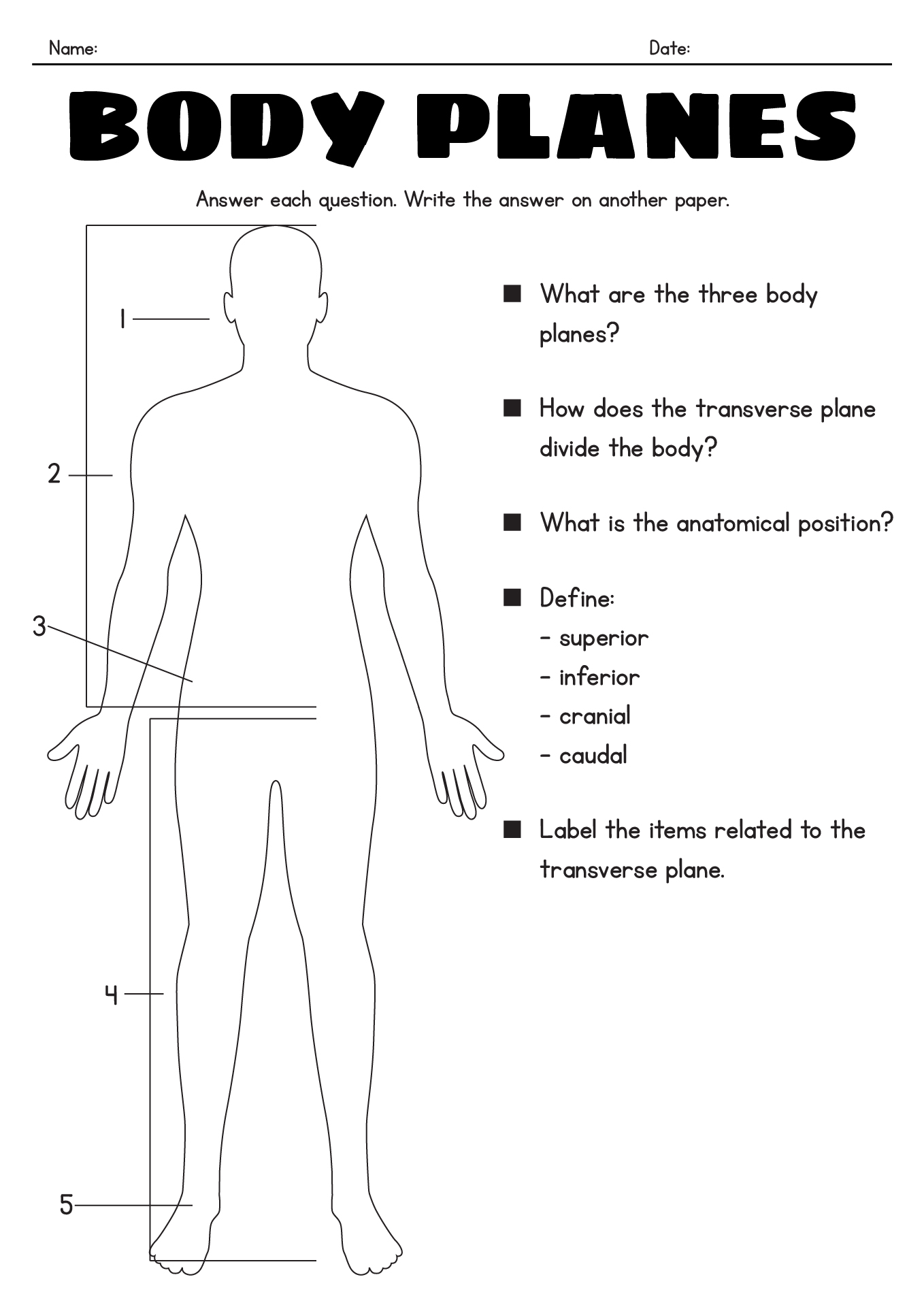Human Body Orientation And Direction Diagram Printable Directional orientation is another anatomical tool used to describe how parts of the body are related to one another Each organ system spans large regions of the human body It is helpful therefore to establish reference planes and directions that can help us describe specific locations of structures as we discuss them
Figure 1 Regions of the Human Body The human body is shown in anatomical position in an a anterior view and a b posterior view The regions of the body are labeled in boldface A body that is lying down is described as either prone or supine Prone describes a face down orientation and supine describes a face up orientation Standard anatomical position is the body orientation used when describing an organism s anatomy Standardization is necessary to avoid confusion since most organisms can take on many different positions that
Human Body Orientation And Direction Diagram Printable
 Human Body Orientation And Direction Diagram Printable
Human Body Orientation And Direction Diagram Printable
https://o.quizlet.com/LqdWpi4UZtJF7lZHu3-vwA_b.png
Each organ system spans large regions of the human body It is helpful therefore to establish reference planes and directions that can help us describe specific locations of structures as we discuss them
Templates are pre-designed files or files that can be used for various functions. They can conserve time and effort by supplying a ready-made format and layout for producing different kinds of material. Templates can be utilized for personal or professional projects, such as resumes, invitations, leaflets, newsletters, reports, discussions, and more.
Human Body Orientation And Direction Diagram Printable

Body Planes Stock Illustrations 42 Body Planes Stock Illustrations

17 Best Medical Terminology Images On Pinterest Medical Terminology

The Human Body An Orientation

Anatomical Position And Terms Of Direction Worksheet Answers Organicid

Human Body Planes Worksheet Studying Worksheets

Anatomy And Physiology Practical 1 Review Anatomical Terminology

https://open.oregonstate.education/aandp/chapter/1-4-anatomical
Use appropriate anatomical terminology to identify key body structures body regions and directions in the body Demonstrate the anatomical position Describe the human body using directional and regional terms Identify three planes most commonly used in the study of anatomy Distinguish between major body cavities
https://assets.pearsonschool.com/asset_mgr/current/201731/M0…
Learning Objectives Name the six levels of structural organization that make up the human body and explain how they are related Name the organ systems of the body and briefly state the major functions of each system Identify

http://clinicalanatomy.ca/labs/411movements.pdf
Anatomical directions are used to orient the position of a body part in relation to the rest of the body Superior Above towards the head Inferior Below towards the feet Proximal Closer to an attached area or the trunk Distal Further from an attached area or the trunk Medial Toward the midline Lateral Away from the midline

https://www.visiblebody.com/blog/Anatomy-and-Physiology-Anatomical
Anatomical position is the description of any region or part of the body in a specific stance In the anatomical position the body is upright directly facing the observer feet flat and directed forward The upper limbs are at the body s sides with the palms facing forward Like so Image captured in AR using Human Anatomy Atlas

https://openstax.org/books/anatomy-and-physiology/pages/1-6-anatomical
Describe the human body using directional and regional terms Identify three planes most commonly used in the study of anatomy Distinguish between the posterior dorsal and the anterior ventral body cavities identifying their subdivisions and
Anatomical position or standard anatomical position refers to the specific body orientation used when describing an individual s anatomy Standard anatomical position of the human body consists of the body standing upright and facing forward with the legs parallel to one another Regina Bailey Updated on July 03 2019 Anatomical directional terms are like the directions on a compass rose of a map Like the directions North South East and West they can be used to describe the locations of structures in relation to other structures or locations in the body
Human Body Diagrams INDEX Musculoskeletal Skeleton Spine Shoulder Back Arm Hand Pelvis Hip Leg Foot Circulatory Nervous Respiratory Digestive Urinary Reproductive Body Systems Shaken Baby